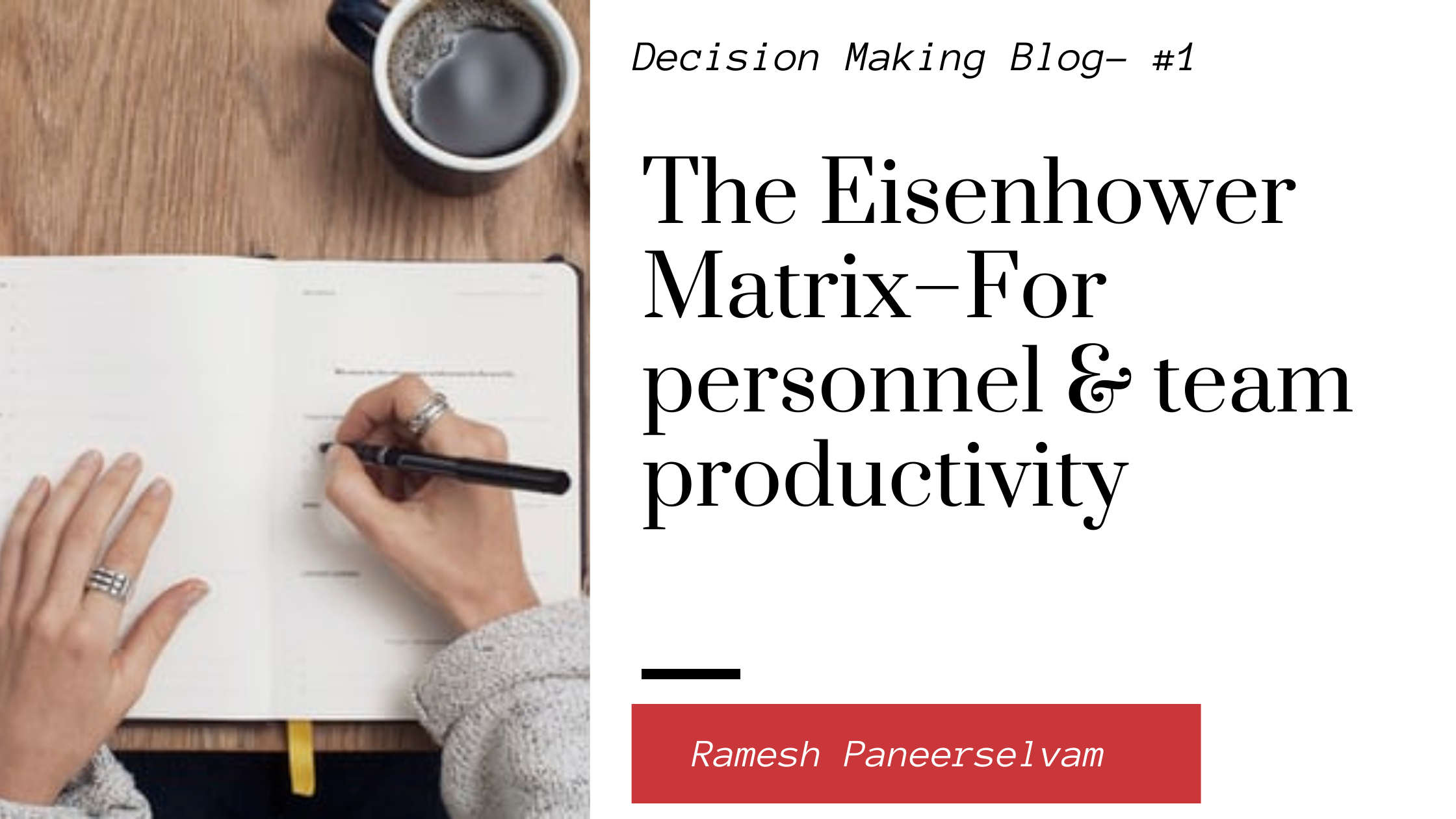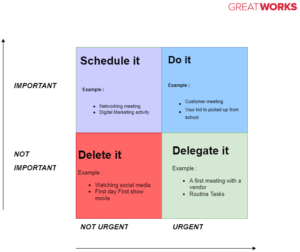
The Eisenhower Matrix–For personnel and team productivity
Last week I was in a conversation with a business owner, he said “Ramesh my employees are always busy but they are not working on priority tasks?”
Not only him,I heard this from many business owners
As leaders, we face this common problem; if we ask our employees on day-to-day tasks then it’s a micro-management, no one likes it
If we don’t ask, then employees are working on the least priority tasks which are convenient for them
Leave alone employees, even most of the business owners are spending time on daily fire fighting activities , sacrificing their priority tasks
The root problem for all this is, we are not able to differentiate between urgent, important, and priority tasks
Are you also experiencing this?
Then
The Eisenhower matrix for personnel and team productivity is the answer; it helps to differentiate the priority, from urgent to important tasks, and sets a clear direction.
This productivity tool is devised by the past US president Dwight .D Eisenhower who was considered a master of time management.
His famous statement “I have two kinds of problems, the urgent and the important. The urgent are not important, and the important are never urgent.”
True
That’s the confusion we all have on our day-to-day tasks
So let’s see how this model helps to prioritize our activities
How to work the Eisenhower Matrix–For personnel and team productivity
Before starting, have your goals or your KPI in mind
Without your goals or KPIs clearly defined, no productivity tool is going to help you.
Then start working.

In the picture above, think of these four boxes as four buckets to fill your daily tasks.
Move from one box to another in the x-axis from not urgent to urgent and not important to important in the Y-axis
Ask yourself, in each box the following question:
Is this task?
1.Not Important + Not Urgent = Delete it
First things First: SAY NO to things that will not contribute anyway to your goals. A first-day first show movie will help nowhere in moving your needle except that it will get you a few likes.
Get the practice of saying no. This frees up a lot of your time and energy
2.Not Important + Urgent = Delegate it.
A routine activity in your organization something like GST filing, bookkeeping or a vendor meeting for the first time, or any routine which can either be done by an employee or an outsourced vendor move into this bucket.
Even if you are a solopreneur, think of delegating to outsourced partners.
The best leaders are masters of delegating. For small business owners, we have challenges of getting quality resources, delegating will test your patience but that’s the way for productivity, or see this activity can be outsourced
3.Important + Not Urgent = Schedule
Tasks like strategic planning or a budget planning exercise are important but not urgent to complete by today. If not today we can do it in two days’ time. This might not call for immediate attention.
A simple rule to schedule is to ensure the activity gets some time in your weekly plan. Postponing these tasks will one day become urgent, or never addressed impact the long-term goals.
4. Important + Urgent = Do It
These are all the actions that demand your immediate attention. These are all actions that directly affect your balance sheet or your personnel goal or a key people relationship. If these actions are continually not producing any impact on the organizational value or on your personal goals, then understand this is a fake urgency. Try to get out of these actions and move this to the delete box.
Fine, here are some guidelines
People in a leadership role should be ideally focussing on the top of their matrix activities.
But not always,
- Don’t be heavy on yourself. When you need to unwind or are on a vacation with a family, your goals are different, your priorities will get changed, but that’s fine
After all, time management is not clock management; it’s the fine balance of personnel, business, family and relationship goals.
A word of advice
Initially, this is going to be tough if you are not used to managing priorities and saying no to some of the routines
And your friends too are going to get bothered, but over time people will start to understand your priorities.
Summary:
Use Case: Productivity tool
Who can use this: People in leadership positions, or anyone who is handling a team?
The Eisenhower Matrix–For personnel and team productivity helps to differentiate the priority, from urgent to important tasks and sets a clear direction.
Do you still find it challenging to manage your priorities, you may need help, why don’t we set up a time to talk, I will take your call as a priority, will you also?
Ramesh. P
Cell:9841052321
